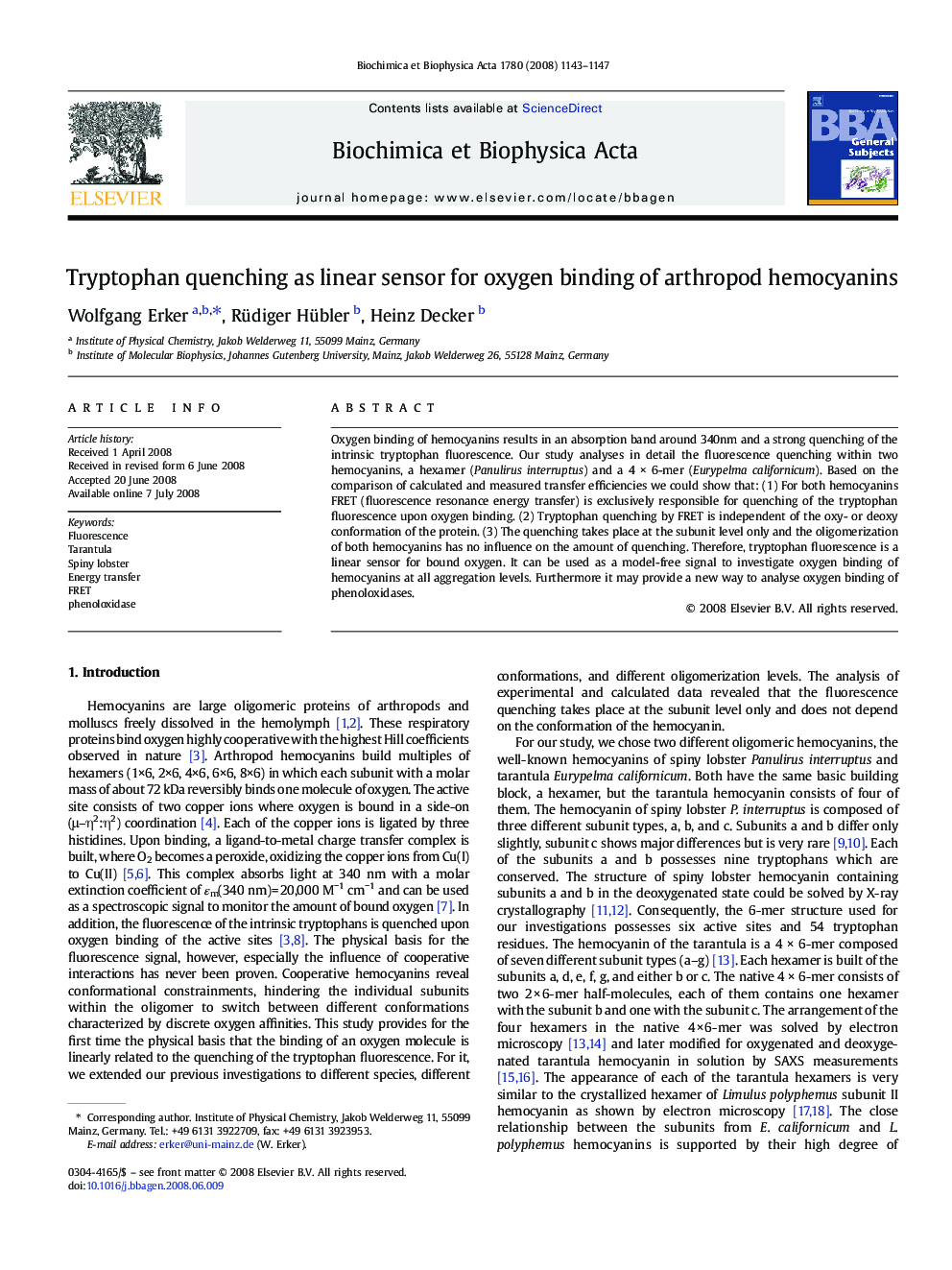| Article ID | Journal | Published Year | Pages | File Type |
|---|---|---|---|---|
| 1948385 | Biochimica et Biophysica Acta (BBA) - General Subjects | 2008 | 5 Pages |
Oxygen binding of hemocyanins results in an absorption band around 340nm and a strong quenching of the intrinsic tryptophan fluorescence. Our study analyses in detail the fluorescence quenching within two hemocyanins, a hexamer (Panulirus interruptus) and a 4 × 6-mer (Eurypelma californicum). Based on the comparison of calculated and measured transfer efficiencies we could show that: (1) For both hemocyanins FRET (fluorescence resonance energy transfer) is exclusively responsible for quenching of the tryptophan fluorescence upon oxygen binding. (2) Tryptophan quenching by FRET is independent of the oxy- or deoxy conformation of the protein. (3) The quenching takes place at the subunit level only and the oligomerization of both hemocyanins has no influence on the amount of quenching. Therefore, tryptophan fluorescence is a linear sensor for bound oxygen. It can be used as a model-free signal to investigate oxygen binding of hemocyanins at all aggregation levels. Furthermore it may provide a new way to analyse oxygen binding of phenoloxidases.
